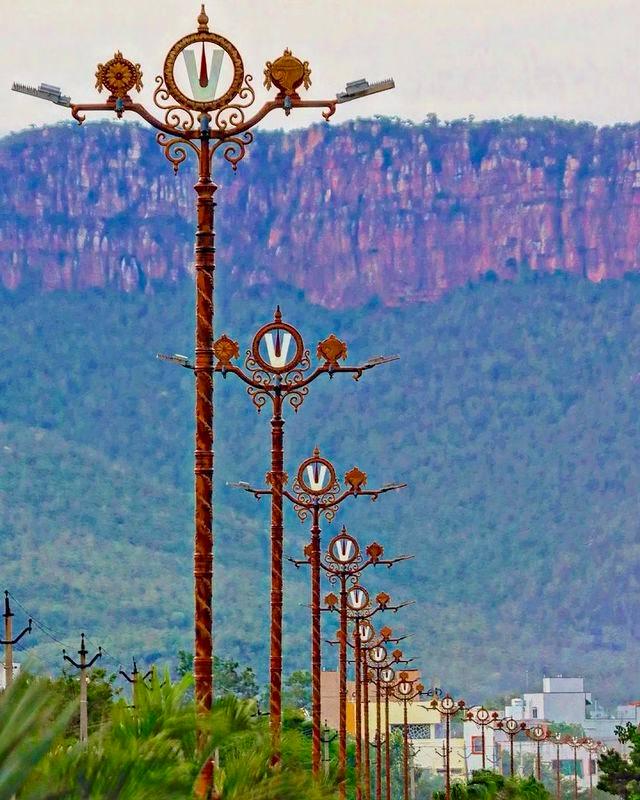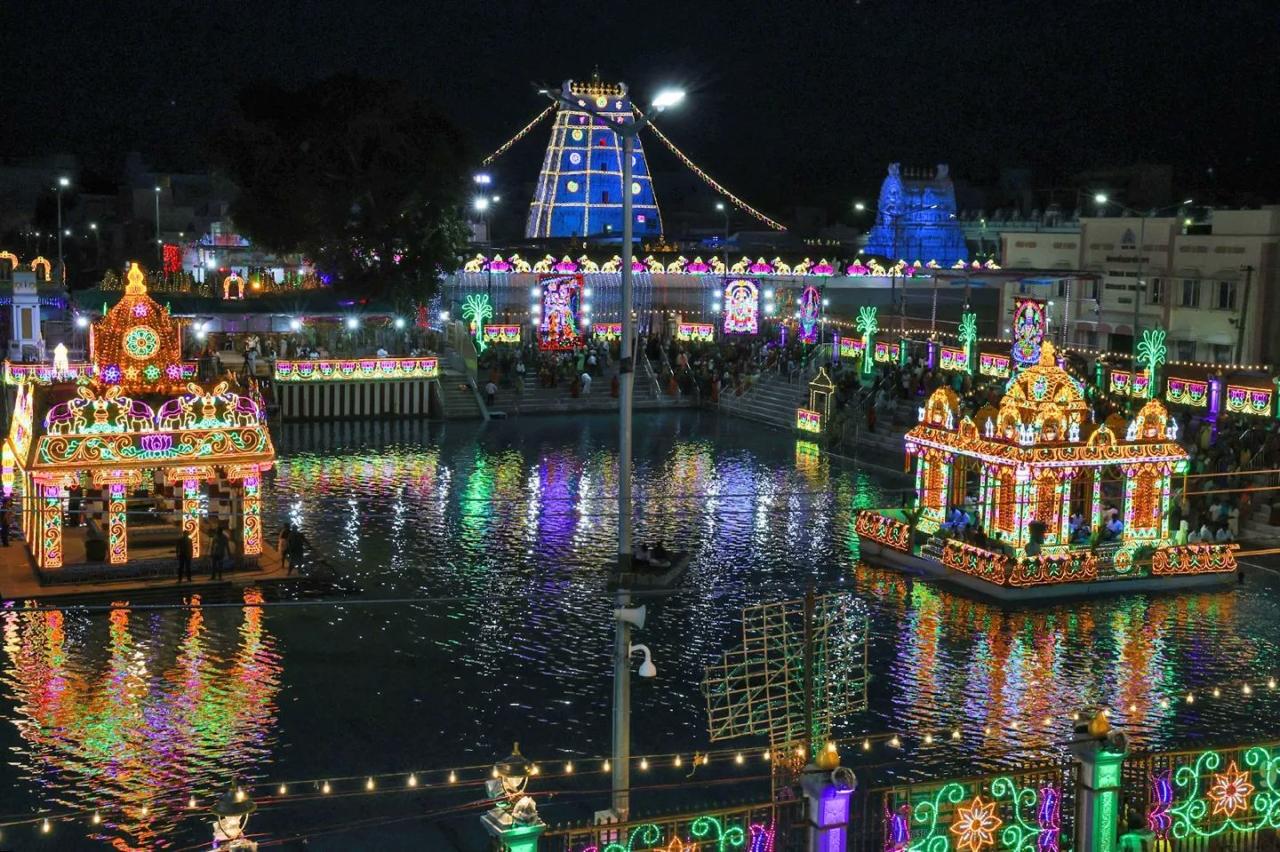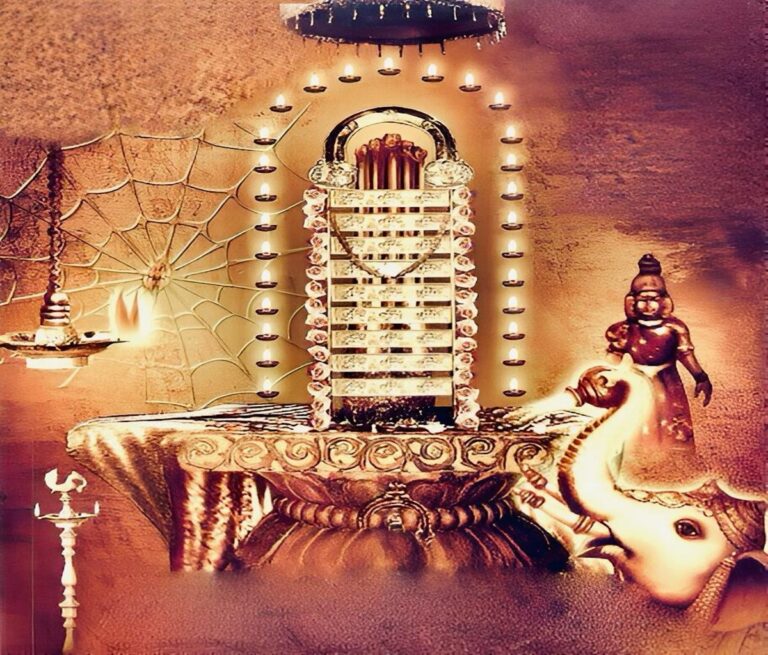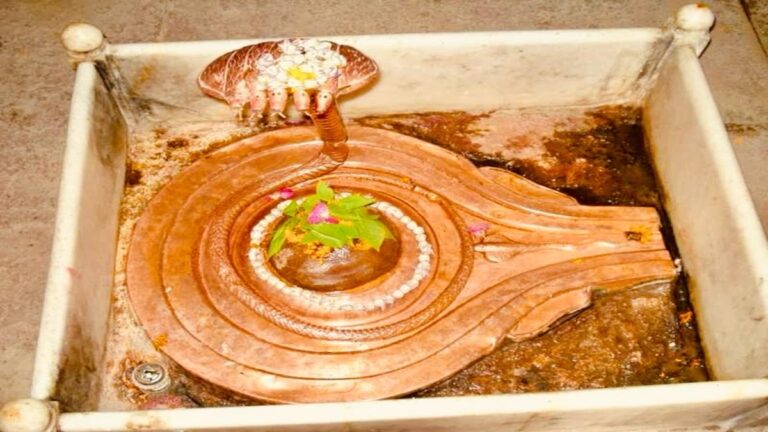It was always a joyous visiting Tirupati Venkatachalapathi temple. The feeling of getting darshan of Lord Venkateswara for less than 10 seconds after hours of waiting, cannot be explained in words. It was like, you waited for a lifetime for that moment. I had such a feeling. My heart felt heavy with immense happiness.
Introduction to Tirupati Balaji Temple
Bharath the Land of the Divine or God, often referred to as the land of Spiritual Happiness, has always been influenced by Gods, their deep influence, and that divine presence is always seen in the environment.
The presence of deities in the temples of India speaks for the rich, age-old, and vast Hindu Sanatana Dharma. Among the millions of marvelous temples in this rich land of Gods where each temple is also an architectural marvel, the hill temple of Tirumala – Tirupati Balaji temple of Sri Venkateswara Swami Temple is considered to be the most visited temple in India and the world.
The temple is situated on the Seshachaam Hill Ranges which again makes it a must-visit temple in India. The Tirupati Balaji temple complex is spread over 16.2 acres of land.
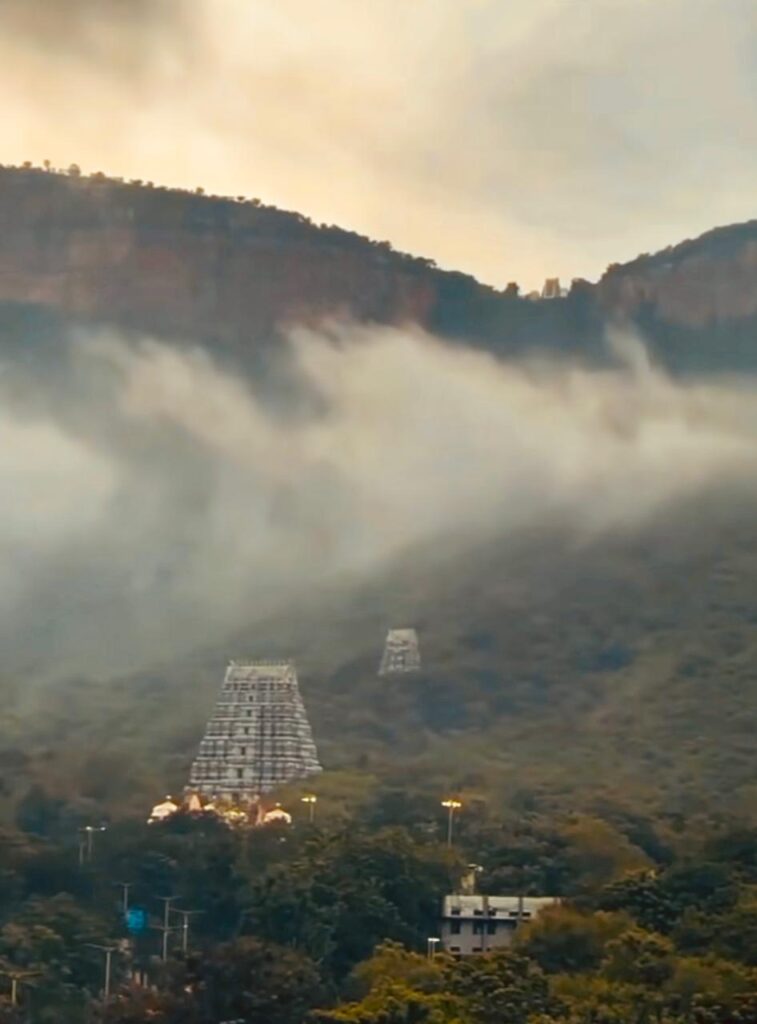
Quick Information
| Nearest Airport | Tirupati (TIR) – Approximately 45 km |
| Travel Time from Tirupati Airport | Approximately 1 Hour 20 minutes |
| Travel Options from Tirupati Airport | Uber, Private taxi services, APSRTC Busses |
| Nearest Railway Station | Tirupati (Station Code – TPW) – Approximately 25 Kms |
| Travel Options | Private Taxi, Uber, Bus Service |
| Nearest Bus Station | Balaji Link Bus Station, Tirumala is well connected with all the major cities |
| Dress Code | Traditional dress is advised to be worn |
| Temple Timings | The temple is open for 18 hours a day. |
History of Tirupati Balaji Temple
Lord Sri Venkateswara a form of God Maha Vishnu, also known as Srinivasa, Tirupati Balaji, and Veṅkaṭachalapati, made Tirumala (also known as Kaliyuga Vaikunta) his abode five thousand years ago. Even before him, it was Lord Varahaswami who had made Tirumala his abode. Since then, many devotees have continued to construct grand entrances on the ramparts of the temple over generations.
The first documented financing was provided by Pallava queen Samavai in 966 CE. She contributed many diamonds and two parcels of property (one 10 acres and the other 13 acres), and she directed that the earnings from that land be used to celebrate significant temple festivals. The Pallava dynasty (9th century), the Chola dynasty (10th century), and the Vijayanagara pradhans (14th and 15th centuries) were all devout followers of Venkateswara.
The temple obtained the majority of its current richness from diamond and gold donations during the Vijayanagara Empire, which is now known as Karnataka state. In the 16th century, Vijayanagara Emperor Krishnadevaraya was a frequent contributor and temple visitor. His gifts of gold and gems enabled the gold-covered of the Ananda Nilayam (inner temple).
The Tirupati Balaji temple is now administered by Tirumala Tirupati Devasthanams (TTD). The temple attracts approximately 75000 devotees every day!
Architecture at Tirupati Balaji Temple
There are three entrances (Dwarams) that lead to the Garbhagirha at Tirupati Balaji Temple. The first Mahadwaram (Padikavali) is accessed through Mahaprakaram (Outside compound wall). There is a 50-foot Gopuram (Temple Tower) which is 5 stories built over this Mahadvaram, which has seven Kalasams on the top of it. There is another entrance called Vendivakili (Silver Entrance), also known as Nadimipadikavali which is the second entrance that can be accessed by Sampangi Prakaram (Inner Compound Wall).
There is another three-story Gopuram built over Vendivakili with seven Kalasams on the top. The Golden entry or Bangaruvakili is the third entrance to Garbhagriha. There are two huge Dvarapalakas, Jaya and Vijaya. Also, you can see a wooden door which is gilded with gold plates with extensive artwork of Dashavatar of God Vishnu.
The Garbhagriha or the sanctum sanctorum is where God Venkateswara resides along with other deities. There are two other doors between Bangaruvakili and Garbhagriha. God Venkateswara is in a standing posture with four hands in different postures – One in Varada posture, one with Sudarashana Chakra, one placed over the thigh, and the other with Panchajanya. Decorated with precious ornament the god bears Goddess Lakshmi on the right chest and Goddess Padmavati on the left. Devotees are not allowed to enter the garbhagriha beyond Kulasekharapadi.
Something not to miss out on is Ananda Nilayam Vimanam which is the main gopuram constructed on the garbhagriha. This three-storied gopuram has a single Kalasam. Covered with copper plates the golden vase is a treat to eyes. Several deities are carved over this Gopuram. Vemana Venkateswara believed to be the exact replica of God Venkateswara can be seen carved on this gopuram.
Ancient scriptures say that God Venkateswara is represented by five Berams (Deities) along with Moolavirat. The others referred to as Pancha Beramulu, are Dhruva Beram, Kautuka Beram, Snapana Beram, Utsava Bearam, and Bali Beram. All these deities are placed in the Garbhagriha under the Ananda Nilayam Vimanam.
The other deities at Tirupati Balaji temple are all in Panchaloha. Sita Devi, Tama, Lakshmana, Rukmini, Krishna. Also, Garuda, Narasimha, Varadaraja, Kubera, Hanuman, Shesha (Serpent), Viswaksena, Sugriva, and Ramanuja have been given their respective sub-shrines.
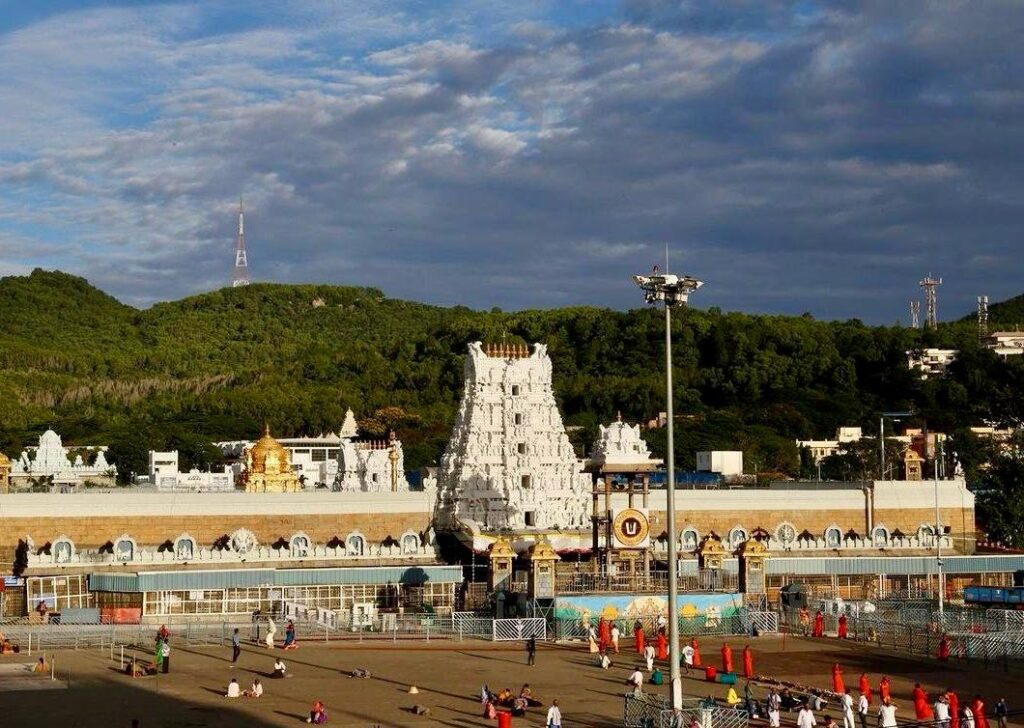
Rituals
One of the oldest traditions of worship is followed here – Vaikhanasa Agama (For Vishnu) revealed by Sage Vikhanasa. The daily pooja (Seva) include Suprabhata Seva, Thomala Seva, Archana, Kalyanotsavam, Dolotsavam (Unjal Seva), Arjita Brahmotsavam, Arjita Vasantotsavam, Sahasra Dipalankarana Seva, Ekanta Seva. There are weekly Sevas conducted at the Temple which include Vishesha Pooja on Monday, Ashtadala Pada Padmaradhana on Tuesday, Sahasra Kalasabhishekam on Wednesday, Tiruppavada Seva on Thursday, Abhishekam and Nijapada Darshanam on Friday. There are no special Sevas on Saturdays and Sundays. Some of the periodical rituals are Jyesthabhishekam, Aaniwara Asthanam, Pavithrotsavam, and Koil Alwar Tirumanjanam.
Tirupati is famous for the Tirupati Laddu which is given as the prasadam.
Legends
It is believed that Lord Srinivasa had sought a loan of over one crore gold coins from Kubera to make arrangements for his wedding. Devotees in order to help him repay his loan donate money at the Venkateshwara Hundi. The Hundi collection goes beyond crores a day.
Festivals
Sri Venkateswara Brahmotsavam, Vaikunda Ekadasi, and Rathasapthami.
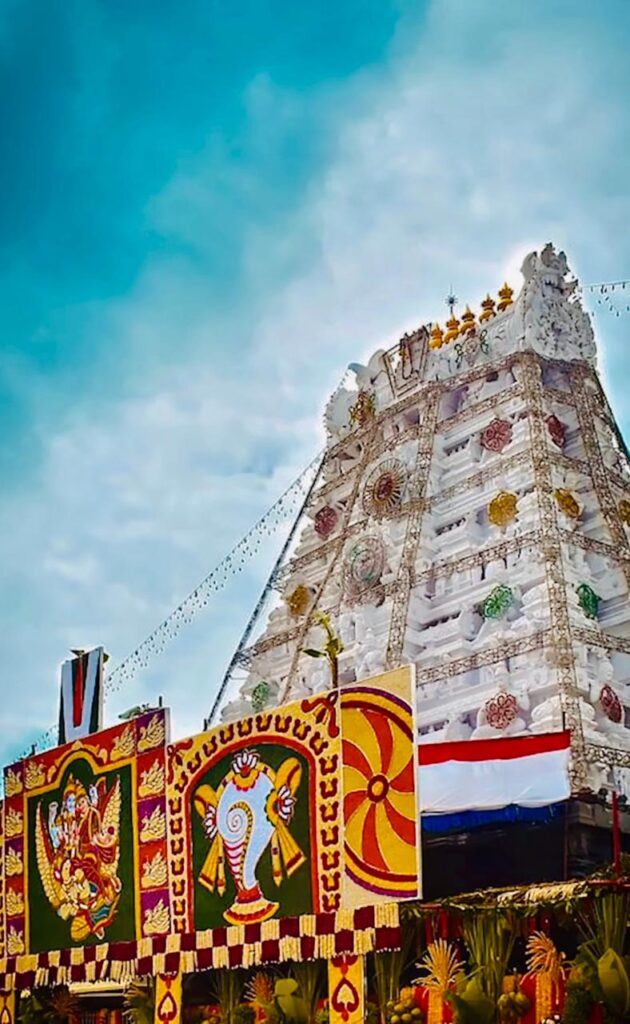
Religious Significance
Tirupati Balaji temple is considered one of the eight Swayambhu Kshetras of God Vishnu (Manifested by its own). Seven other temples are Srirangam Ranganathaswamy temple, Vanamamalai Perumal Temple, Bhu Varaha Swamy temple (Three in South India), Naimisaranya, Pushkar, and Badrinath Temples (Three in North India), and Saligrama in Nepal.
There is a wide description of Tirumala temple by Alvars in Divya Prabandham. It is mentioned as one of the 108 Vishnu temples. Rig Veda and Asthadasa Puranas have mentioned the benefits of doing a pilgrimage to Venkatachala. God Venkateswara has been described as the great bestower of boons.
Conclusion
Tirupati Balaji temple stands as a guiding light of devotion and tradition, inspiring millions of pilgrims to seek the blessing of God Venkateswara. I was lucky to be born in this land of Sanatan Dharma with age-old rich tradition, and Tirupati Balaji temple left me with a sense of spiritual fulfillment and great peace. Know about other famous temple of Andhra Pradesh.
